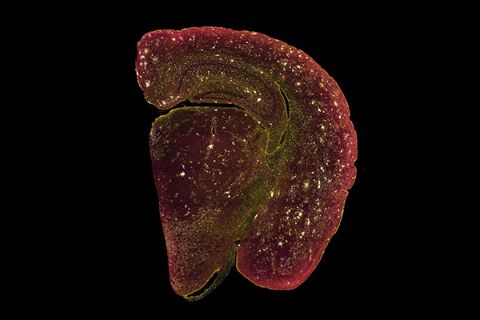
Figure 1: A micrograph showing inflammatory responses in the cortex of the new model mouse. Alzheimer's disease patients and mouse models frequently display neuroinflammation of this nature in association with amyloid pathology. © 2025 RIKEN Center for Brain Science.
RIKEN researchers have demonstrated the protective effects of a specific genetic mutation against Alzheimer's disease in animals for the first time1. This could eventually lead to the development of new ways to treat the neurodegenerative disorder.
Genetic mutations generally increase the risk of developing diseases. For example, a mutation known as the Swedish mutation is associated with a hereditary form of Alzheimer's disease.
But sometimes mutations can offer protection against diseases. A case in point is a mutation discovered in humans in 2012 that reduces the risk of developing Alzheimer's disease. Named the Icelandic mutation, it is particularly prevalent among Icelanders and was first identified there.
Both the Swedish and Icelandic mutations occur in the same gene-one that encodes for the amyloid precursor protein (APP). When cleaved by certain enzymes, APP can give rise to plaques of beta amyloid in the brain that are a key characteristic of Alzheimer's disease.
Until now, experimental evidence demonstrating the protective effect of the Icelandic mutation had been observed only in lab experiments that did not involve animals.
That may be because most mouse models of Alzheimer's disease harbor the Swedish mutation. This has so far hindered efforts to study the beneficial effects of the Icelandic mutation.
Now, by introducing the Icelandic mutation into an Alzheimer's disease mouse model that lacked the Swedish mutation, a team led by Hiroki Sasaguri of the RIKEN Center for Brain Science has shown the protective effects of the Icelandic mutation in mice.
"This model is important because it is the first in the world to demonstrate the protective effect of the Icelandic mutation against amyloid pathology in animals," says Sasaguri.
Using their new mouse model, the team discovered how the Icelandic mutation protects mice against Alzheimer's disease. Specifically, they found that the Icelandic mutation decreases the susceptibility of APP to be cleaved by the enzyme BACE1, thus reducing the amount of beta amyloid produced in the brains of mice. Thanks to the Icelandic mutation, these mice experienced reduced buildup of beta amyloid plaques compared to mice not carrying the mutation.
The team is now looking into other protective mutations. "We've been searching for and discovering even more powerful protective mutations," says Sasaguri. "We aim to introduce these protective mutations into the animal models using genome editing technology and establish them as a new gene therapy."
The ultimate goal is to develop novel human therapies for Alzheimer's disease. "We're working to elucidate the protective mechanisms involved in order to explore safer and cheaper treatment methods other than genome editing," says Sasaguri.






